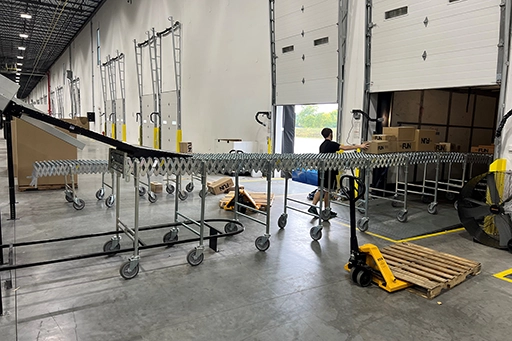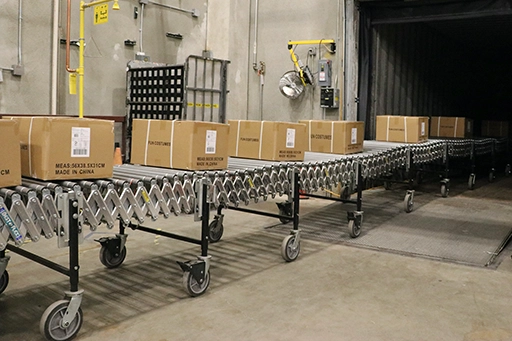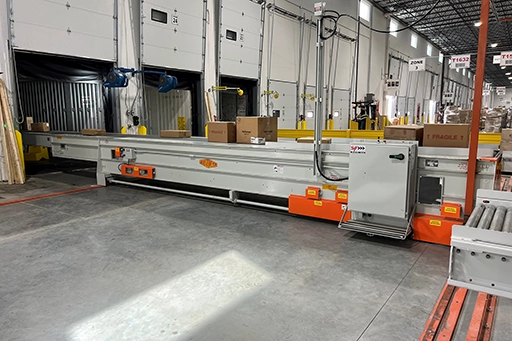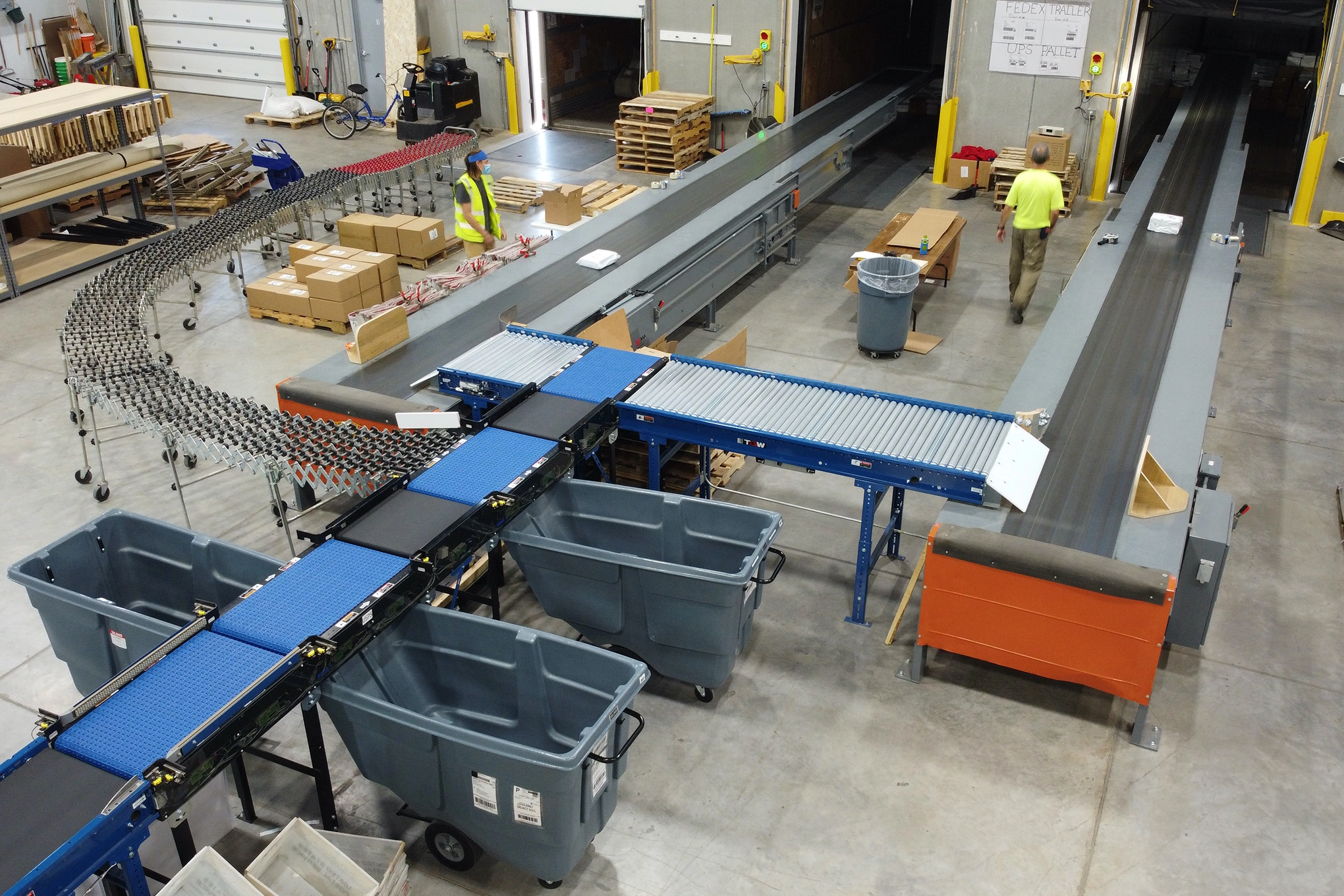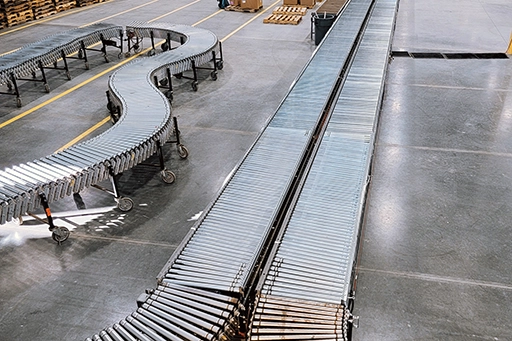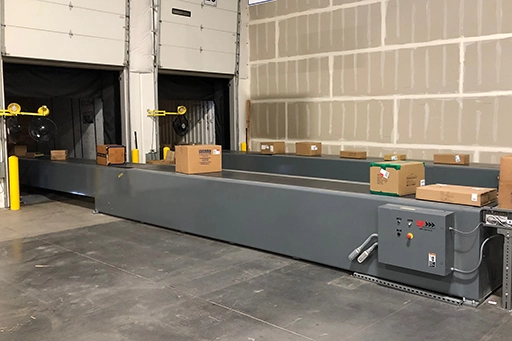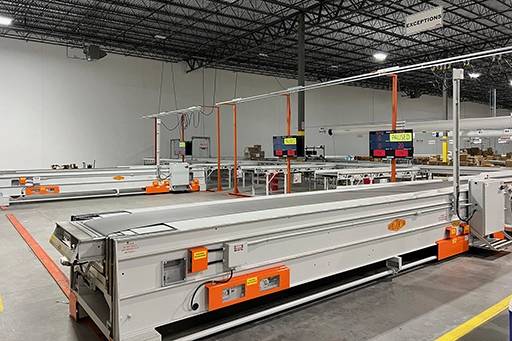Receiving & Loading Conveyor Overview
Receiving conveyors are typically found at the beginning of the material flow process. When goods or materials are delivered to a distribution center or warehouse, the receiving conveyor receives and transports those materials to the appropriate area in the facility.
Loading conveyors are typically found at the end of the material flow process. After packing or sorting, conveyors interact with loading systems to automate flow of product into shipping containers or trucks.

